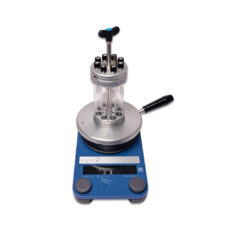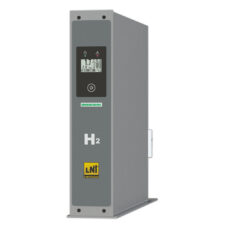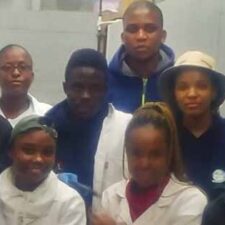NEW: the latest instalment of the “Behind the flask” scientific blog series
2 years on from our last sit down with Dr Sarah Cleary, she has gone from a post doc in the Vincent group at the University of Oxford to now Chief Scientific Officer for spin-out company, HydRegen since their inception in March 2021. Asynt caught up with Sarah to find out more about their research progress over the last couple of years and the exciting direction that HydRegen is heading with sustainable chemical manufacturing.
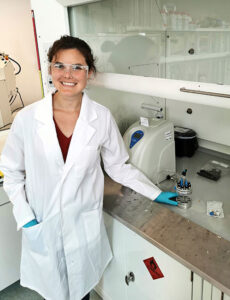
Back in 2019, Sarah and her colleagues were using the DrySyn OCTO to optimise and expand the applications of HydRegen – an innovative, heterogeneous biocatalytic hydrogenation technology. Fast forward to September 2021 and Asynt have just installed a new DrySyn OCTO and benchtop hydrogen generator rig at their new labs in the Begbroke Science Park.
HydRegen are developing novel and sustainable strategies for using the growing toolbox of NADH-dependent redox biocatalysts in chemical synthesis. Their system allows chemical manufacturing to harness the precision of biology with the efficiency of catalytic hydrogenation, allowing you to swap-out your heavy metal catalyst with highly selective biocatalysed hydrogenation reactions or decarbonise existing redox biocatalysis processes, all while operating within existing continuous flow hydrogenation reactors.
Asynt: What have been the key highlights for HydRegen since we last caught up with each other back in 2019?
Sarah: Our CEO, Dr Holly Reeve, did some market research back in 2020 which revealed to us that HydRegen’s technology will work brilliantly for driving sustainable chemical manufacturing. It slots in beautifully with companies that are already doing traditional asymmetric catalysis and also companies that are doing biocatalysis. We essentially offer a solution that brings the benefits of metal hydrogenation together with the benefits of biocatalysis, in a clean manner, for sustainable chemical manufacturing.
In place of a traditional metal such as palladium or platinum, we have enzymes catalysing our highly selective double bond reductions. This process is mild, not needing high pressure or high temperature. In addition to this, on the side of biocatalysis, we use hydrogen as a fuel source whereas typically enzymes rely on carbon based fuels like glucose or propanol or formate.
We can therefore run these highly selective mild reactions in the absence of a carbon based fuel source.
Asynt: That sounds fantastic! We can already think of industries such as pharmaceuticals that would be extremely interested in this technology. Is this where you see typical applications?
Sarah: Yes exactly – our process doesn’t require a metal catalyst therefore you don’t end up with trace metals in your product, which can be difficult and costly to remove – particularly for pharmaceuticals. Many pharmaceutical companies are already comfortable with the idea of using enzymes in their processes, so we know that they’re a great compatibility fit with us in terms of wanting high selectivity and not wanting trace metals.
Asynt: Awesome, as ex-medicinal chemists we’re well aware of the pain of having to remove metals from your final compounds prior to any in-vitro testing and how annoying that process can be!
Looking ahead, what are your plans for the next 12 months?
Sarah: Our most immediate goal is to provide our R&D scale catalysts to customers to replace metal hydrogenation catalysts. We’re also running our first reactions in Flow because that’s another driver in the UK markets, combining our process with automation and in a small footprint.
It’s a key goal of ours that our Process should be a slot-in technology, meaning that no new infrastructure or capital expenditure would be needed for companies to implement if they were to adopt it at larger scale.
From 2019, we have been carrying out more intensive batch work that has showed the level of sustainability that we can reach with low to no waste. We are now striving to talk with as many companies as possible to see how we can potentially work together to slot our technology into their processes, and really capitalise on these sustainability benefits.
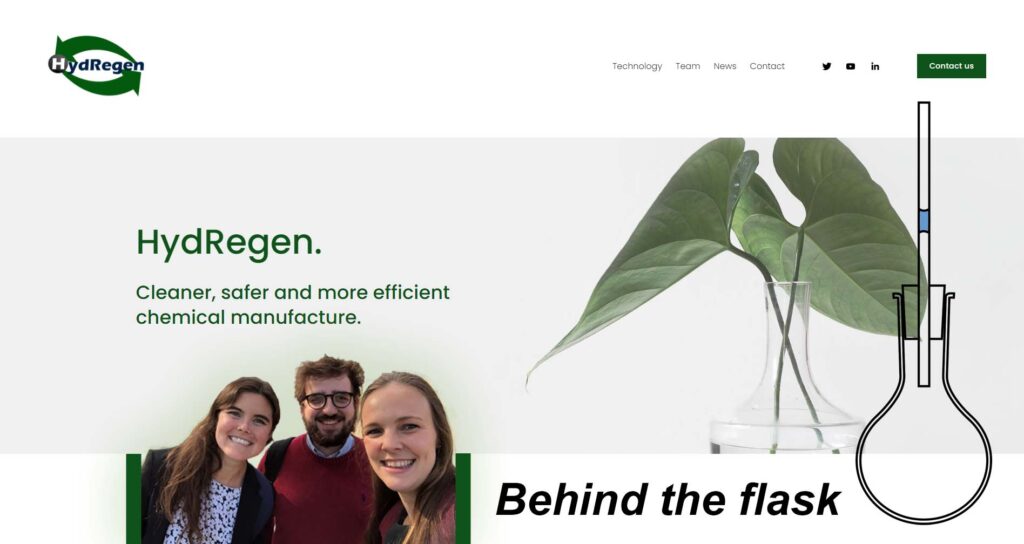
From Left to Right: Dr Sarah Cleary (CSO), Jack Allman (Product Development Specialist) and Dr Holly Reeve (CEO).
Asynt: It really sounds like a truly exciting time to be working at HydRegen – how have you found transitioning from a Post Doc at Oxford University to working full time at a spin out company though?
Sarah: I would say the focus of the research has been one of the biggest differences; In academia you’re working a lot on discovery of novel processes whereas now we’re primarily focussed on putting that into a product that customers would be happy with.
For us, that’s meant it’s mostly Flow Chemistry and optimising the catalyst further from our earlier results in the academic lab whilst trying to meet key benchmarks that customers would ask about, such as “how many grams of product can you make in a day” or “how many uses of the catalyst can I get”, etc.
Asynt: And how have you found working at the Begbroke Science Park in particular?
Sarah: It’s been lovely! Even in our short time here, we’ve found it hugely beneficial being surrounded by other small spinout or start-up companies. Just one benefit is being able to share experiences such as advice on different government funding which we’ve found incredibly useful. Begbroke Science Park also offers lots of workshops for start up businesses, and has a weekly newsletter that highlights key information such as any funding that we might be able to apply for. They also often run business oriented seminars and even have infrastructure to help with health & safety in the labs amongst other things.
Asynt: It’s great that we have installed a second DrySyn OCTO system today, this time hooked up to a benchtop hydrogen generator. How have you found using the OCTO for your research?
Sarah: The OCTO has been really useful for us. Because we’re using enzymes, we don’t need anything pressurised so the octo has been the perfect way of screening, whether it be the catalyst itself or reaction parameters. It has definitely helped expedite our results and we are confident in those results thanks to the ability to carry out processes in triplicate under identical conditions. It’s just worked really well for us!
Because we didn’t want to use hydrogen cylinders in our lab, for various safety reasons, being able to hook up our DrySyn OCTO to a benchtop hydrogen generator (also supplied by Asynt) was very convenient. It’s been super simple to set up and to use and its small footprint means it doesn’t take up too much valuable space in our fume hood!
Asynt: Very kind words, thanks so much Sarah! We’re very pleased the system in place is providing such strong service for your ongoing work in sustainable chemical manufacturing.
If you would like to find out more about HydRegen and the technology that they are developing for sustainable biocatalysis, you can visit their website here: https://hydregenoxford.com/
You can also follow Sarah on Twitter here: https://twitter.com/cleary_sarah
If you’re interested in taking part in our “Behind the flask” scientific blog series then please get in touch via [email protected] to talk through your ideas. We’re looking forward to hearing from you!
